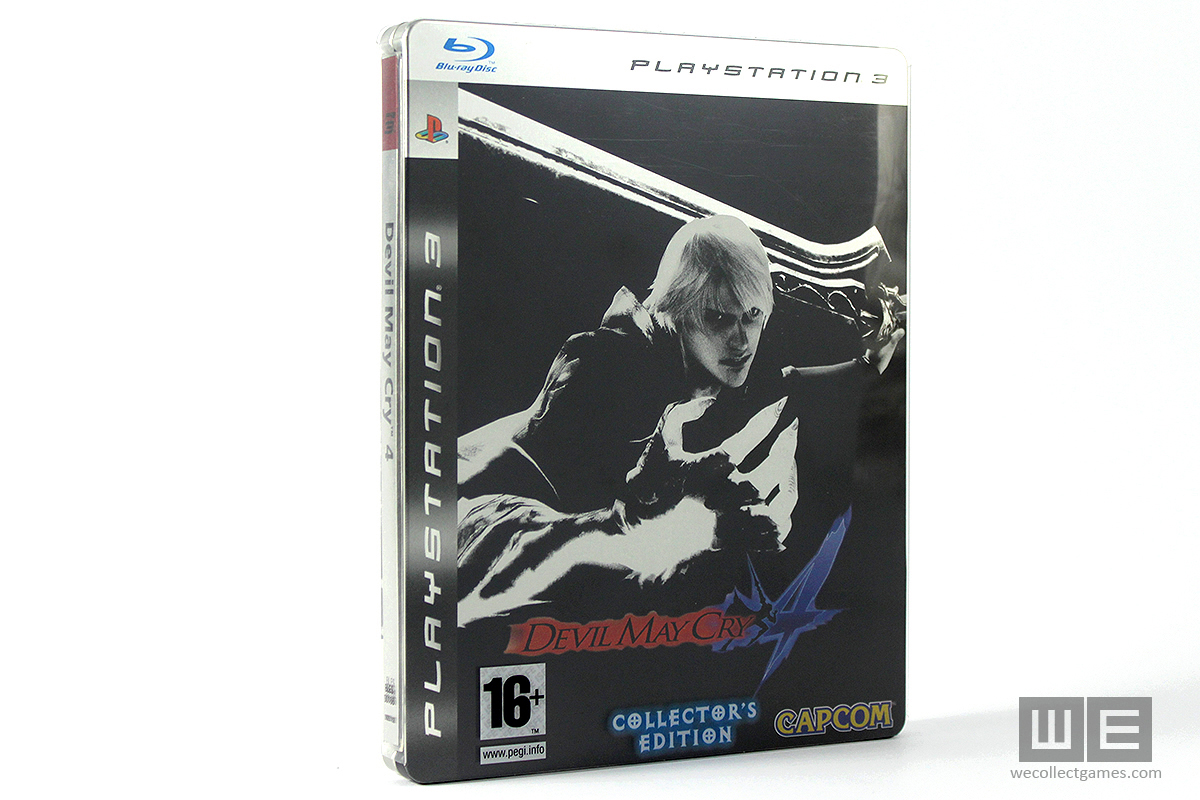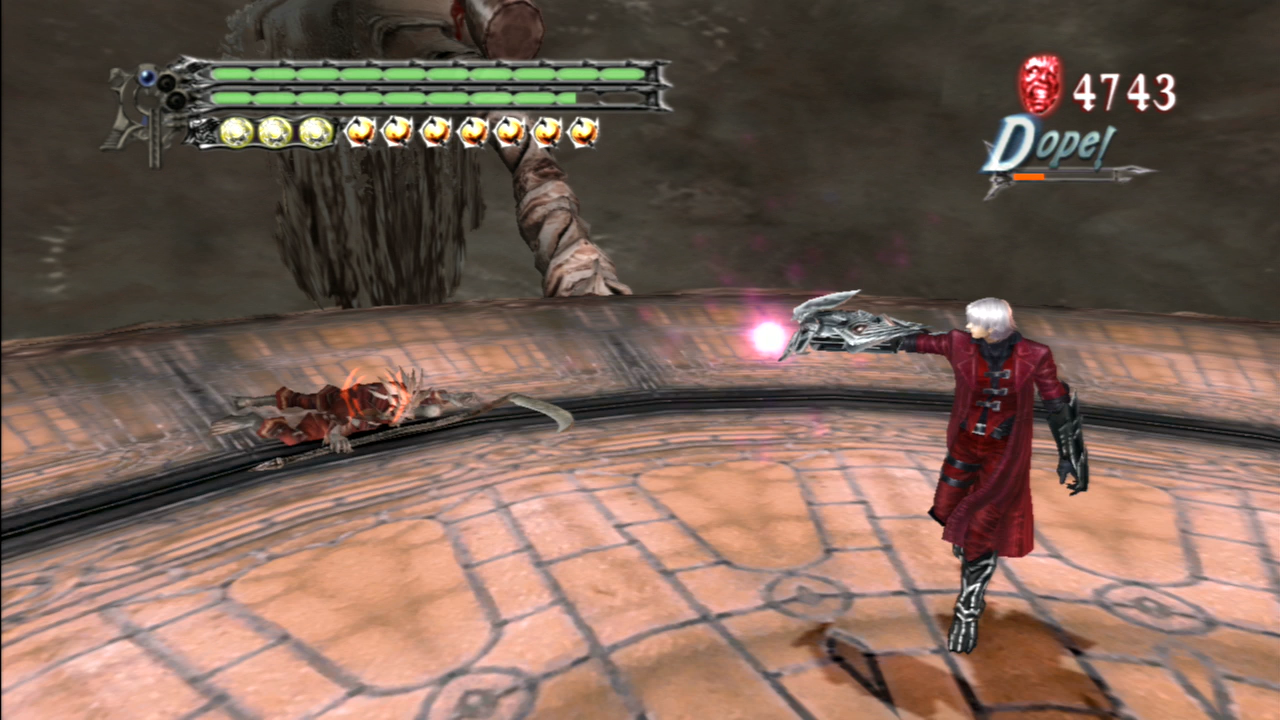Introduction
Capcom Switch Sale: Resident Evil, Devil May Cry, Street Fighter and more on heavy discounts! 2K Games hosts its festive sale on Nintendo Switch eShop with popular titles! FAU-G, a made in India.
- Commercial (5 CD) published by Suleputer on Mar 20, 2019 containing original soundtrack, vocal from Devil May Cry 5 with compositions by Kota Suzuki, John R. Graham, Yoshiya Terayama, Hiromitsu Maeba, Casey Edwards, Stephen McNair, Cody Matthew Johnson, Jeff Rona performed by Ali Edwards, Rachel Fannan, Cliff Llorett, Shotaro Nakayama, Zhenlan Kang, Daiki Umase, Michael Barr.
- Pachislot Devil May Cry 4 (パチスロ デビルメイクライ4, 'Pachislot Devil May Cry 4'?) is the second pachinko game of the Devil May Cry series. It was developed by Enterrise and released by Capcom in partnership with Fields on September 17, 2013.1 It was sold 25,000 units.2 Later it was ported onto Android and iOS devices by CommSeed Corporation. 1 Overview 2 Gallery 3 See also 4.
NVIDIA today released the GeForce RTX 3080 'Ampere' graphics card, its first gaming-segment graphics card to implement PCI-Express Gen 4.0 bus support. Be sure to check out our main review of the GeForce RTX 3080 Founders Edition, where we go into many more details about the card. The new interface doubles bandwidth over PCI-Express Gen 3.0, enabling 64 GB/s of bi-directional bandwidth (or 32 GB/s per direction). The per-direction metric is more relevant because compared to a storage device, such as an SSD, data moves more in one direction (from the CPU to the GPU) than the other.
Back in July 2019, the first PC platform implementing PCI-Express Gen 4.0 debuted with AMD's 3rd Gen Ryzen platform, along with the company's RX 5700 XT 'Navi.' NVIDIA is a good 14 months behind AMD at implementing PCI-Express Gen 4.0, but the RTX 3080 'Ampere' being launched today is the first enthusiast-segment card supporting PCIe Gen 4, which NVIDIA markets as being capable of 4K UHD gaming, and hence commonsense guides us to think it's better positioned to utilize the higher interface bandwidth. To highlight this, we did a similar PCIe scaling article with the RX 5700 XT last year and found the performance impact of PCIe Gen 4 to be negligible.
There's another reason we feel the RTX 30 series is better positioned to benefit from PCIe Gen 4, and that is RTX-IO, a feature which leverages DirectStorage to transfer compressed data directly from your SSD onto the graphics memory, de-compressing using GPU hardware, with negligible CPU overhead. With PCIe Gen 4-based M.2 NVMe SSDs enabling compressed data streams at up to 7 GB/s, PCIe Gen 4 should in theory reduce the system bus bandwidth impact of RTX-IO on the RTX 3080.
As we mentioned earlier, AMD has had PCIe Gen 4-based desktop and HEDT platforms since July 2019, and the 11th Gen Core 'Rocket Lake' desktop processor is rumored to finally bring PCIe Gen 4 support. Some Intel Socket LGA1200 motherboards are already shipping with preparation for PCIe Gen 4. With NVIDIA's RTX 30 series implementing PCIe Gen 4, the standard could hit critical mass. Are you still on an older Intel or AMD platform? Don't worry, the RTX 3080 supports older PCIe generations, it will automatically fall back to the fastest interface speed available.
Since 3rd Gen Ryzen is the only desktop processor series with PCIe Gen 4 as of this writing, we decided to put together a special test-bench for this article, powered by an AMD Ryzen 9 3900XT 12-core processor and an ASRock X570 Taichi motherboard. On this platform, we test the performance impact of not just older generations of PCIe, but also fewer lanes within a PCIe generation. We use the motherboard BIOS settings to limit PCIe generations, while PCIe lane counts are reduced using a physical barrier (duct tape that seals off individual PCIe lane contacts), letting us toggle between x16 and x8. The RTX 3080 is put through our entire selection of games, which should highlight how each title responds to the new bus standard.
In a separate article, we compared the Ryzen 9 3900XT to the Core i9-10900K with the maximum PCIe bandwidth each of the two processors supports.
When Microsoft introduced the Xbox Series S, it stepped out into some uncharted territory. Sure, game consoles have received updates in the past — both Sony and Microsoft, in fact, issued mid-cycle refreshes in the last generation. Putting out two entirely different boxes, though? Both with widely differing degrees of power? That was pretty new. And what made it more wild was how Microsoft insisted everything would be totally cool — the Series S and Series X could definitely co-exist side by side.
It's still too early to tell whether or not that'll hold true. Perhaps, as time goes on, both systems will settle into their respective slots and deliver solid gaming experiences. In the meantime, if you're in the market for a new machine and are thinking about picking up an Xbox Series S, here are some false facts about it you shouldn't believe.
The Series S is a lower resolution Series X
Part of what made the Xbox Series S so intriguing was the way Microsoft sold the console's feature set. The company essentially said the Xbox Series S was just like an Xbox Series X, only targeting a resolution of 1440p versus the Series X's 4K. Perhaps you can understand why this had people excited. A 1440p, 60 frames-per-second machine for $300? That's a pretty solid deal, right?
Unfortunately, if it sounds too good to be true, it most likely is.
Gamers got a rude awakening when Assassin's Creed: Valhalla launched for both the Xbox Series X and Series S. The higher-end Series X targeted 4K and 60 frames-per-second in the title, really delivering on that next-gen experience. The Xbox Series S, on the other hand, did stay true to its 1440p promise, but only managed to deliver 30 frames-per-second.
The upcoming Devil May Cry 5 is another example where the Xbox Series S version of a game will get shortchanged when compared to the Series X version. On the Xbox Series X, players will see ray tracing fully implemented. Series S owners, sadly, won't get any ray tracing at all.

The Series S will hold developers back
Devil May Cry 3 Slot Machine Slot


One of the fears that came with Microsoft releasing two next-gen consoles was this: the budget option would hold the premium option back. Some believed that the existence of an Xbox Series S would cause developers to target that hardware spec, and lead to them not pushing the Xbox Series X as far as it could go. So far, that doesn't appear to be the case.
Devil Slot Machine
In fact, you can take a look at Assassin's Creed: Valhalla and Devil May Cry 5 as two examples of that theory being debunked. These two titles have truly groundbreaking Series X versions while also having inferior Series S versions. In these two cases, developers didn't simply push the Xbox Series S build of the game to the Xbox Series X and call it a day. The Series X versions have features the Series S versions do not, flexing the capabilities of that more powerful machine.
Devil May Cry Slot Machine
If anything, it almost seems as though the existence of the Xbox Series X is doing more harm to the Series S than the other way around. The Series S isn't getting those finer optimizations so it can truly be a 'mini' take on the Series X. In Valhalla and DMC5, at least, the Series S is getting the short end of the stick.